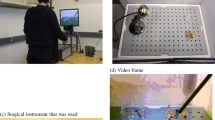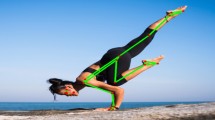Abstract
Older people living alone are facing serious risks. Falls are the main risk that menace their lives. In this paper, a new vision-based method for fall detection is proposed to allow older people to live independently and safely. The proposed method uses shape deformation and motion information to distinguish between normal activity and fall. The main contribution of this paper consists on the proposition of a new descriptor based on silhouette deformation, as well as, a new image sequence representation is proposed to capture the change between different postures, which is discriminant information for action classification.
Experimental results are conducted on two states-of-the art datasets (SDU fall and UR Fall dataset) and a comparative study is presented. The results obtained show the performance of the proposed method to differentiate between fall events and normal activity. The accuracy achieved is up to 98.41% with the SDU fall dataset and 95.45% with URFall dataset.














Similar content being viewed by others
References
Ageing WHO, Unit LC (2008) WHO global report on falls prevention in older age. World Health Organization, Geneva
Akagündüz E, Aslan M, Şengür A, Wang H, İnce MC (2017) Silhouette orientation volumes for efficient fall detection in depth videos. IEEE J Biomed Health Inform 21(3):756–763
Altman NS (1992) An introduction to kernel and nearest-neighbor nonparametric regression. Am Stat 46(3):175–185
Alwan M, Rajendran PJ, Kell S, Mack D, Dalal S, Wolfe M, Felder R (2006) A smart and passive floor-vibration based fall detector for elderly. In: Information and communication technologies, 2006. ICTTA’06. 2nd, vol 1, 1003–1007. IEEE
Anderson D, Luke RH, Keller JM, Skubic M, Rantz M, Aud M (2009) Linguistic summarization of video for fall detection using voxel person and fuzzy logic. Comput Vis Image Underst 113(1):80–89
Bian ZP, Hou J, Chau LP, Magnenat-Thalmann N (2015) Fall detection based on body part tracking using a depth camera. IEEE J Biom Health Inform 19(2):430–439
Chen WH, Ma HP (2015) A fall detection system based on infrared array sensors with tracking capability for the elderly at home. In: 2015 17th international conference on E-health networking, application & aervices (HealthCom), pp 428–434. IEEE
Cheng J, Chen X, Shen M (2013) A framework for daily activity monitoring and fall detection based on surface electromyography and accelerometer signals. IEEE J Biomed Health Inform 17(1):38–45
Dalal N, Triggs B (2005) Histograms of oriented gradients for human detection. In: IEEE computer society conference on Computer Vision and Pattern Recognition, 2005. CVPR 2005, 1, 886–893
Ding C, Zou Y, Sun L, Hong H, Zhu X, Li C (2019) Fall detection with multi-domain features by a portable FMCW radar. In: 2019 IEEE MTT-S International Wireless Symposium (IWS), 1–3. IEEE
Douglas DH, Peucker TK (1973) Algorithms for the reduction of the number of points required to represent a digitized line or its caricature. Cartographica 10(2):112–122
Er PV, Tan KK (2018) Non-intrusive fall detection monitoring for the elderly based on fuzzy logic. Measurement 124:91–102
Foroughi H, Rezvanian A, Paziraee A (2008) Robust fall detection using human shape and multi-class support vector machine. In: Sixth Indian conference on computer vision, graphics & image processing, 2008. ICVGIP’08, 413–420. IEEE
Freund Y, Schapire RE (1996) Experiments with a new boosting algorithm. In Icml, 96, 148–156
Harris ZS (1954) Distributional structure. Word 10(2–3):146–162
Ho TK (1995) Random decision forests. In Document analysis and recognition, 1995. Proceedings of the third international conference on, vol 1, pp 278–282. IEEE
https://docs.opencv.org/2.4/doc/tutorials/imgproc/shapedescriptors/find_contours/find_contours.html
Jokanovic B, Amin M, Ahmad F (2016) Radar fall motion detection using deep learning. In: Radar Conference (RadarConf), 2016 IEEE, 1–6. IEEE
Kim S, Guy SJ, Hillesland K, Zafar B, Gutub AAA, Manocha D (2015) Velocity-based modeling of physical interactions in dense crowds. Vis Comput 31(5):541–555
Kwolek B, Kepski M (2014) Human fall detection on embedded platform using depth maps and wireless accelerometer. Comput Methods Prog Biomed 117(3):489–501
Kwolek B, Kepski M (2015) Improving fall detection by the use of depth sensor and accelerometer. Neurocomputing 168:637–645
Li X, Nie L, Xu H, Wang X (2018) Collaborative fall detection using smart phone and kinect. Mobile Netw Appl 23:1–14
Liu CL, Lee CH, Lin PM (2010) A fall detection system using k-nearest neighbor classifier. Expert Syst Appl 37(10):7174–7181
Ma X, Wang H, Xue B, Zhou M, Ji B, Li Y (2014) Depth-based human fall detection via shape features and improved extreme learning machine. IEEE J Biomed Health Inform 18(6):1915–1922
Mousse MA, Motamed C, Ezin EC (2017) Percentage of human-occupied areas for fall detection from two views. Vis Comput 33(12):1529–1540
Rougier C, Auvinet E, Rousseau J, Mignotte M, Meunier J (2011) Fall detection from depth map video sequences. In: International conference on smart homes and health telematics. Springer, Berlin/Heidelberg, pp 121–128
Telea A (2004) An image inpainting technique based on the fast marching method. J Graph Tools 9(1):23–34
Tsai TH, Wang RZ, Hsu CW (2019) Design of fall detection system using computer vision technique. In: Proceedings of the 2019 4th international conference on robotics, control and automation, 33–37. ACM
Walker JE, Howland J (1991) Falls and fear of falling among elderly persons living in the community: occupational therapy interventions. Am J Occup Ther 45(2):119–122
Worrakulpanit N, Samanpiboon P (2014) Human fall detection using standard deviation of C-motion method. J Autom Control Eng 2(4)
Wu T, Gu Y, Chen Y, Xiao Y, Wang J (2019) A Mobile cloud collaboration fall detection system based on ensemble learning. arXiv preprint arXiv:1907.04788
Yazar A, Erden F, Cetin AE (2014) Multi-sensor ambient assisted living system for fall detection. In: Proceedings of the IEEE international conference on acoustics, speech, and signal processing (ICASSP’14), 1–3
Author information
Authors and Affiliations
Corresponding author
Additional information
Publisher’s note
Springer Nature remains neutral with regard to jurisdictional claims in published maps and institutional affiliations.
Rights and permissions
About this article
Cite this article
Merrouche, F., Baha, N. Fall detection based on shape deformation. Multimed Tools Appl 79, 30489–30508 (2020). https://doi.org/10.1007/s11042-019-08428-w
Received:
Revised:
Accepted:
Published:
Issue Date:
DOI: https://doi.org/10.1007/s11042-019-08428-w




